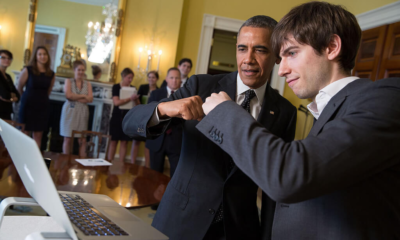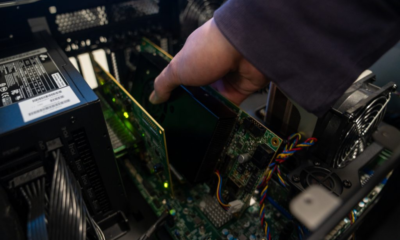Tech News
Topic: Emerging and disruptive technologies – NATO HQ

Technologies such as artificial intelligence (AI), autonomous systems and quantum technologies are changing the world and the way NATO operates. These and other emerging and disruptive technologies (EDTs) present both risks and opportunities for NATO and Allies. That’s why the Alliance is working with public and private sector partners, academia and civil society to develop and adopt new technologies, establish international principles of responsible use, and maintain NATO’s technological edge through innovation.
Emerging and disruptive technologies are increasingly touching all aspects of life – from electronics like phones and computers, to everyday activities like grocery shopping and banking. These technologies are also having a profound impact on security. Innovative technologies are providing new opportunities for NATO militaries, helping them become more effective, resilient, cost-efficient and sustainable. These technologies, however, also represent new threats from state and non-state actors, both militarily and to civilian society.
NATO’s 2022 Strategic Concept – which defines key challenges facing the Alliance and outlines how NATO will address them – reflects this changing context. It affirms that EDTs bring both opportunities and risks, and that they are altering the character of conflict, acquiring greater strategic importance and becoming key arenas of global competition. As a result, Allies agreed in the Strategic Concept to promote innovation and increase investments in EDTs to retain NATO’s interoperability and military edge. Allies will work together to adopt and integrate new technologies, cooperate with the private sector, protect their innovation ecosystems, shape standards and commit to principles of responsible use that reflect the Alliance’s democratic values and human rights.
To embrace these opportunities while also countering threats enabled by EDTs, NATO is working with Allies to develop responsible, innovative and agile EDT policies that can be implemented through real, meaningful activities. By working more closely with relevant partners in academia and the private sector, NATO aims to maintain its technological edge and military superiority, helping deter aggression and defend Allied countries.
In February 2021, NATO Defence Ministers endorsed “Foster and Protect: NATO’s Coherent Implementation Strategy on Emerging and Disruptive Technologies.” This is NATO’s overarching strategy to guide its relationship to EDTs. It has two main areas of focus:
These goals are key to ensuring NATO retains its strategic and effective dominance.
NATO’s innovation activities currently focus on nine priority technology areas:
The Alliance is developing specific plans for each of these key technology areas (linked above, where a public version is available). These strategies are laying the groundwork for NATO to accelerate responsible innovation and the rapid adoption of modern technologies, in order to improve decision-making and steer transatlantic innovation for defence and security in accordance with Allied values, norms and international law.
Data is a key enabler for all EDTs. NATO is bolstering its data exploitation efforts through its Framework Policy and Strategic Plan. In line with the Strategic Concept’s call to expedite the digital transformation of the Alliance, NATO has also developed an Implementation Strategy for digital transformation.
To meet the critical challenges of today and tomorrow, NATO directly engages innovator communities. Through new initiatives and bodies designed to foster innovation in EDTs and protect such efforts from potential adversaries and competitors, NATO plays an active role in cultivating a transatlantic innovation ecosystem for defence and security.
Defence Innovation Accelerator for the North Atlantic (DIANA)
At the 2021 Brussels Summit, Allied Leaders agreed to launch the Defence Innovation Accelerator for the North Atlantic (DIANA) to foster transatlantic cooperation on critical technologies, promote interoperability and harness civilian innovation by engaging with academia and the private sector. Subsequently established in 2022, DIANA works directly with leading researchers and entrepreneurs, from early-stage start-ups to more mature companies, to solve critical defence and security challenges through dual-use technologies.
DIANA works by running competitive industry challenges. Each challenge is based on a critical defence and security problem, and asks innovators to develop deep tech, dual-use technologies to help solve it. Innovators that are selected to participate in DIANA’s programmes receive non-dilutive grants (i.e., investment capital that does not require them to give up equity or ownership in their company), and gain access to over 20 accelerator sites and more than 180 test centres in dozens of countries across the Alliance. They also have access to a network of mentors (scientists, engineers, industry experts, end-users and government procurement experts) and a community of trusted investors. Lastly, DIANA offers pathways to market both within NATO as an organisation and with NATO Allies.
DIANA launched its first three pilot challenge programmes in 2023, selecting 44 companies (from a pool of over 1,300 applicants) to join its accelerator programme and tackle specific challenges on energy resilience, undersea sensing and surveillance, and secure information sharing. Once fully operational in 2025, DIANA will have the capacity to work with hundreds of innovators each year across a wide network of accelerator sites and test centres throughout the Alliance.
NATO Innovation Fund
NATO Leaders also agreed at the 2021 Brussels Summit to establish a NATO Innovation Fund. The EUR 1 billion venture capital fund will provide strategic investments in start-ups developing dual-use emerging and disruptive technologies in areas that are critical to Allied security.
Many start-ups working on deep tech struggle to attract sufficient investment because of lengthy time-to-market timelines and the high capital intensity of their research. The NATO Innovation Fund will tackle this problem by leveraging its unique position as a patient investor with a 15-year run-time better suited to the extended time horizons necessary for deep-tech start-ups. It will focus on early-stage investments (i.e., pre-seed through Series A and follow-on), providing risk capital directly into these start-ups, while also having the ability to invest in other top-tier deep-tech venture capital funds that align with the Fund’s three strategic objectives:
The NATO Innovation Fund is the world’s first multi-sovereign venture capital fund. It includes 24 NATO Allies as Limited Partners: Belgium, Bulgaria, Czechia, Denmark, Estonia, Finland, Germany, Greece, Hungary, Iceland, Italy, Latvia, Lithuania, Luxembourg, the Netherlands, Norway, Poland, Portugal, Romania, Slovakia, Spain, Sweden, Türkiye and the United Kingdom. The Fund is making direct investments into start-ups located in any of the 24 participating Allied countries, as well as indirect investments into deep tech funds with a transatlantic impact.
The Fund’s main headquarters are in Amsterdam, with regional offices in London and Warsaw.
NATO’s Data and Artificial Intelligence Review Board
NATO’s Data and AI Review Board is the focal point of NATO’s efforts to govern responsible development and use of AI. It does this by helping to operationalise the Principles of Responsible Use of AI that Allies agreed in NATO’s AI Strategy, including by developing a ‘Responsible AI’ certification standard. The Board creates practical Responsible AI toolkits, guides Responsible AI implementation in NATO and supports Allies in their Responsible AI efforts.
Each NATO country has a member that sits on the Board. These members may be drawn from government, academia, the private sector or civil society – they come from diverse backgrounds to ensure NATO’s approach to Responsible AI is multidisciplinary. External experts are also part of the Board’s expert subgroups, which help fulfil the Board’s core functions – including with a focus on Responsible AI tools, standards and knowledge-sharing.
NATO Advisory Group on Emerging and Disruptive Technologies
The NATO Advisory Group on Emerging and Disruptive Technologies is an independent group that provides external advice to NATO on how it can optimise its innovation efforts. The Group was established in July 2020 and consists of 12 experts from the private sector and academia across the Alliance who have led cutting-edge research, developed EDT policy and managed innovation initiatives. Its membership is renewed every two years.
The Group released its first annual report in March 2021, providing four initial recommendations to NATO: improve technology literacy throughout the Organization; establish an efficient network of Innovation Centres; design and facilitate new financing mechanisms for innovation with private sector entities, both small and large; and create innovation partnership initiatives with external EDT stakeholders from industry and academia.
In its second annual report delivered in April 2022, the Group examined three critical, ongoing work-strands aimed at enabling NATO and Allies to adopt new technologies at pace and maintain a technological edge: DIANA, the NATO Innovation Fund and the Human Capital Innovation Policy (which contains recommendations for NATO on how to attract, retain and develop talented employees with technical skills and innovation mindsets). The report describes how these initiatives are signs of real action towards technological readiness and outlines the EDT-motivated, holistic defence pivot that NATO is ideally placed to lead.
In 2023, its deliverables included inputs to NATO’s Quantum Strategy and NATO’s Biotechnology and Human Enhancement Strategy. It also remains a trusted advisor of DIANA, with the Chair of the Advisory Group serving as an observing member on the DIANA Board of Directors.
NATO Innovation Board
The NATO Innovation Board is chaired by the Deputy Secretary General and brings together high-level civilian and military leadership from across the Alliance. The purpose of the Board is to look at new ideas from outside of the Organization, provoke discussion, foster adoption of best practices and secure cross-NATO support for changes that will help NATO innovate. This includes receiving recommendations from the NATO Advisory Group on Emerging and Disruptive Technologies.
Other NATO innovation bodies
Other NATO bodies that are also involved in the Alliance’s innovation activities and are driving technological development and adoption across NATO include:
NATO’s focus on EDTs is strongly linked to cooperation with partners in the public and private sector, academia and civil society. Given that many defence applications of EDTs are developed by or with the private sector, engagement with industry – especially start-ups – is key. The North Atlantic Council has held several technology-focused sessions where Permanent Representatives connect with executives driving technological breakthroughs.
NATO has been supporting innovation, both in Allied armed forces and in its own capabilities, since the Alliance was founded. However, the accelerating pace of emerging and disruptive technologies is creating rapid and large-scale changes – not only in everyday life, but also in security and defence. The timeline below lays out milestones in the development of NATO’s EDT policies.
December 2019 – NATO Leaders agree an Emerging and Disruptive Technology Implementation Roadmap with seven original EDT areas: data, AI, autonomy, quantum technologies, biotechnology and human enhancement, hypersonic technologies and space. The purpose of this roadmap is to help structure NATO’s work across key technology areas, and enable Allies to consider the implications of these technologies, for instance for deterrence and defence, and capability development.
December 2019 – NATO Leaders ask Secretary General Jens Stoltenberg to lead a forward-looking reflection process to strengthen NATO both militarily and politically and to adopt a more global approach for the Alliance. Over the subsequent months, this takes shape as the NATO 2030 initiative.
June 2020 – Following consultation with Allied parliamentarians, civil society, public and private sector experts, and young leaders, NATO Secretary General Jens Stoltenberg lays out his priorities for NATO 2030. This includes a focus on innovation and critical technologies, to make sure that the Alliance remains ready to face tomorrow’s challenges. DIANA and the NATO Innovation Fund begin to take shape as key pillars of the NATO 2030 agenda.
July 2020 – NATO Secretary General Jens Stoltenberg establishes the first NATO Advisory Group on Emerging and Disruptive Technologies. The group consists of 12 external experts from the private sector and academia, from countries across the Alliance. These experts provide advice to NATO on the adoption of new technologies and other aspects of innovation, including education, financing and innovation ecosystems.
September 2020 – The 2020-2022 NATO Advisory Group on Emerging and Disruptive Technologies presents recommendations to the NATO Innovation Board, including on innovative technologies that NATO should be pursuing as a priority.
February 2021 – NATO Defence Ministers endorse NATO’s Coherent Implementation Strategy on Emerging and Disruptive Technologies, with a focus on the seven EDT areas from the 2019 EDT Implementation Roadmap.
March 2021 – The NATO Advisory Group on Emerging and Disruptive Technologies publishes its first annual report (for the year 2020), providing four key recommendations for NATO: improve technology literacy throughout the Organization; establish a network of Innovation Centres; design and facilitate new financing mechanisms for innovation with private sector entities, both small and large; and create innovation partnership initiatives with external EDT stakeholders from industry and academia.
June 2021 – At the 2021 Brussels Summit, NATO Leaders agree the NATO 2030 agenda to ensure the Alliance can face the challenges of today and tomorrow, including by sharpening NATO’s technological edge. As part of the NATO 2030 agenda, they also agree to launch the Defence Innovation Accelerator for the North Atlantic (DIANA) and to establish the NATO Innovation Fund.
October 2021 – NATO Defence Ministers endorse NATO’s Artificial Intelligence (AI) Strategy, setting out how the Alliance aims to adapt AI to meet operational requirements, and to accelerate and mainstream the secure and trustworthy integration of AI across a range of Alliance capabilities. Ministers also endorse the Data Exploitation Framework Policy. Seventeen Allies sign up to develop the framework for the NATO Innovation Fund, and to establish how it will work in practice. An additional four Allies join this process over the following months.
February 2022 – NATO Defence Ministers endorse the first Annual Report on Innovation and EDTs, defining new activities to enhance NATO’s technological readiness, including by adding two new EDT areas: novel materials and manufacturing, as well as energy and propulsion.
April 2022 – NATO Foreign Ministers endorse the charter for DIANA, which outlines its mission and strategy; legal authorities; financial mechanism; governance; and the regional offices, accelerator sites and test centres that will make up its initial footprint. Foreign Ministers from 21 Allies agree the framework for the NATO Innovation Fund.
April 2022 – The NATO Advisory Group on Emerging and Disruptive Technologies delivers its second annual report (for the year 2021), examining three critical, ongoing work strands aimed at enabling NATO and Allies to adopt new technologies at pace and maintain a technological edge: DIANA, the NATO Innovation Fund and the Human Capital Innovation Policy.
June 2022 – At the 2022 Madrid Summit, leaders from 22 Allied countries commit to participating in the NATO Innovation Fund. (Finland and Sweden became the 23rd and 24th participating countries following their accessions to NATO in April 2023 and March 2024 respectively.) Separately, NATO Leaders unveil DIANA’s updated initial footprint of test centres and accelerator sites across the Alliance.
October 2022 – NATO Defence Ministers endorse NATO’s Autonomy Implementation Plan and the establishment of NATO’s Data and Artificial Intelligence Review Board. The Data and Artificial Intelligence Review Board serves to operationalise NATO’s Principles of Responsible Use of AI, as set out in NATO’s AI Strategy. The Autonomy Implementation Plan drives a coherent approach to NATO’s autonomy protection and development efforts in line with the Alliance’s norms, values and commitment to international law.
February 2023 – NATO Defence Ministers endorse the second Annual Report on Innovation and EDTs, which outlines NATO’s approach to fostering and protecting EDTs in 2023. The Report adds next-generation communications networks as a new EDT area and determines that data has been sufficiently mainstreamed into NATO lines of effort, including data exploitation and digital transformation, to no longer be considered a standalone EDT area.
February 2023 – NATO’s Data and Artificial Intelligence Review Board (DARB) meets for the first time to start the development of a user-friendly Responsible AI certification standard.
February 2023 – NATO announces plans to establish the Alliance Persistent Surveillance from Space (APSS) initiative to enhance space-based surveillance and intelligence for the Alliance, which will improve situational awareness and decision-making processes.
March 2023 – DIANA opens its first regional office, at the Imperial College London Innovation Hub in London, United Kingdom.
June 2023 – DIANA launches its first three pilot challenge programmes, inviting innovators to apply to its programmes.
July-August 2023 – The NATO Innovation Fund appoints the investment team that will manage the EUR 1 billion venture capital fund, and confirms the participation of 23 NATO Allies as Limited Partners (becoming 24 when Sweden joins the Alliance in March 2024).
November 2023 – Allied Foreign Ministers approve NATO’s Quantum Technologies Strategy.
November 2023 – DIANA announces its first cohort of innovators, having selected 44 companies from over 1,300 applicants to join its accelerator programme.
March 2024 – DIANA doubles the size of its network of accelerator sites and test centres. DIANA’s network will now comprise 23 accelerator sites (up from 11) and 182 test centres (up from 90) in 28 Allied countries, augmenting DIANA’s capacity to support innovators from across the Alliance as they develop their technologies. View an interactive map showing all DIANA locations.
April 2024 – NATO Defence Ministers endorse NATO’s Biotechnology and Human Enhancement Strategy.
more
You must provide an address
This is not a valid e-mail address!
Something went wrong sending the address
Tech News
Technology | The Obama Foundation – the Obama Foundation
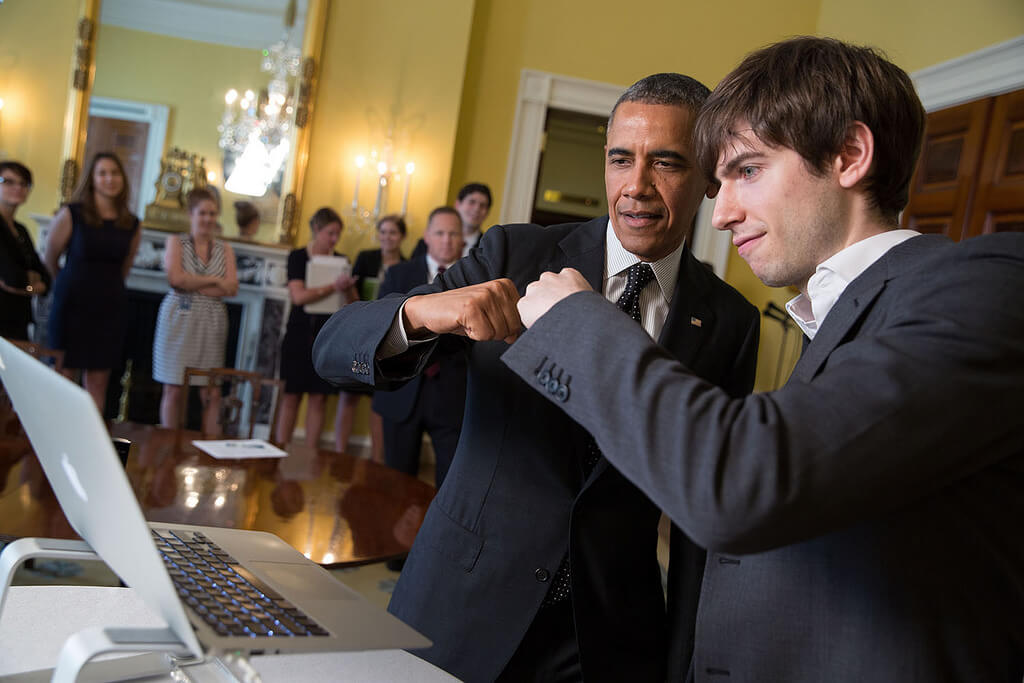
We and our third-party partners (such as Meta and Google) use cookies and similar technologies on this website to collect information about you to operate and improve the website, run analytics to better understand our audience, and show you personalized content and advertising. By clicking “Accept” you consent to our use of cookies.
One of President Obama’s top initiatives in office was delivering better digital services to the American people. Furthermore, President Obama and his administration sought to provide the American people with a multitude of ways to engage with their government. He fervently believes in unlocking the power of government data to spur innovation across our Nation and improve the quality of services for the American people.
On his first full day in office, President Obama issued the “Transparency and Open Government” memorandum, making clear that his Administration was “committed to creating an unprecedented level of openness,” and fostering a sense of transparency, public participation, and collaboration amongst the government and the American people.
Since 2009, the Administration made significant progress opening up data sets that have never before been public, and creating new pathways to civic engagement. Today, students are able to compare the cost of college with other significant data points, such as graduation rates and average salaries of graduates to determine where to get the most bang for their buck. Communities can map demographic, income, and school data to promote Fair Housing. Patients can find information on the safety and cost of hospitals, nursing homes, and physicians, empowering them to make smarter health care choices. These diverse tools benefit different groups of people, industries, and communities, yet all rely on one thing: open data.
President Obama and Tumblr founder and CEO David Karp share a fist bump as they record a GIF in the Old Family Dining Room, prior to a Tumblr Q&A at the White House, June 10, 2014. (Courtesy Barack Obama Presidential Library)
“ Government should be collaborative. Collaboration actively engages Americans in the work of their Government.”
Search over 166,944 datasets on topics such as Agriculture, Climate, Education, Health, Local Government, Manufacturing, or Science & Research.
June 24, 2011
President Obama’s National Robotics Initiative is part of a broader effort to promote a renaissance of American manufacturing through the Advanced Manufacturing Partnership. This initiative focuses on developing robots that work with or beside people to extend or augment human capabilities, taking advantage of the different strengths of humans and robots. As part of this initiative, the National Science Foundation, the National Institutes of Health, NASA, and the Department of Agriculture are funding $70 million of research for next-generation robotics.
“During photo lines, there’s this routine called ‘push and pull.’ One social aide helps push the next guest towards the President and another helps pull them out of the room. During a photo line to commemorate the 25th anniversary of the Americans With Disabilities Act, Alice Wong, Disability Visibility Project Founder, participated via robot. So after her photograph had been taken, social aides gestured to ‘pull’ her out of the room as the next guest entered.” July 20, 2015 (Courtesy Barack Obama Presidential Library)
May 23, 2012
The Presidential Innovation Fellows (PIF) program brings the principles, values, and practices of the innovation economy into government through the most effective agents of change we know: our people. This highly-competitive program pairs talented, diverse technologists and innovators with top civil-servants and change-makers working at the highest levels of the federal government to tackle some our nation’s biggest challenges. These teams of government experts and private-sector doers take a user-centric approach to issues at the intersection of people, processes, products, and policy to achieve lasting impact.
President Barack Obama meets with Presidential Innovation Fellows in the Roosevelt Room of the White House, Jan. 25, 2013. (Courtesy Barack Obama Presidential Library).
On August 17, 2015 President Obama made the Presidential Innovation Fellows program permanent. He noted that to-date fellows have helped,
Veterans access care and benefits more easily,
Families have greater access to their electronic medical records,
Police departments make their data searchable online, and
Students gain access to high speed internet in school.
“ We must harness new ideas and technology to remake our government…”
August 11, 2014
Formally launched by the Administration on August 11, 2014, the U.S. Digital Service is a small team of our country’s brightest digital talent that will work with government agencies to find more effective ways to use technology to improve the service, information, and benefits they provide.
President Barack Obama shares a laugh with participants prior to an Affordable Care Act implementation meeting with Vice President Joe Biden in the Roosevelt Room of the White House, Sept. 22, 2014. (Courtesy Barack Obama Presidential Library).
“ …what we realized was that we could potentially build a SWAT team, a world-class technology office inside of the government that was helping agencies. We’ve dubbed that the U.S. Digital Service…they are making an enormous difference…”
October 22, 2014
President Obama believed climate education and literacy are particularly important for building a 21st-century workforce, where tomorrow’s community leaders, city planners, and entrepreneurs have the information, knowledge, and training to make sound decisions and grow businesses in the context of a changing climate.
He launched the Climate Education and Literacy Initiative to ensure that all students and citizens have the knowledge and training they need to address the climate change challenge. The Initiative ensured that citizens of all ages have a solid grounding in science, technology, engineering, and math (STEM) skills that serve as a basis for discovery, invention, and innovation.
“This photograph was from the annual White House Science Fair. It shows the President posing with Girl Scout Troop 2612 from Tulsa, Oklahoma. I think the eight-year-old girls–Avery Dodson, Natalie Hurley, Miriam Schaffer, Claire Winton and Lucy Claire Sharp–are called ‘Brownies’. They had just shown the President their exhibit: a Lego flood proof bridge project. The fair celebrated the student winners of a broad range of science, technology, engineering and math (STEM) competitions from across the country.” (Courtesy Barack Obama Presidential Library)
Recent events in Ferguson, Missouri and around the country have grabbed the attention of the nation and the world, and have highlighted the importance of strong, collaborative relationships between local police and the communities that they protect.
On December 1, 2014, the Administration announced new steps they took to strengthen the relationships between law enforcement agencies and the communities they are obligated to protect and serve, including:
Advancing the use of body worn cameras and promoting proven community policing initiatives
Creating a new task force to promote expansion of the community-oriented policing model, which encourages strong relationships between law enforcement and the communities that they serve as a proven method of fighting crime
Reforming how the federal government equips state and local law enforcement – particularly with military-style equipment
“The President talks with students and law enforcement officials about community relations and programs that build trust between youth and the police in Camden, N.J. Earlier that day, we had toured police headquarters with the Chief of Police J. Scott Thomson. Several months later I was giving some friends a tour of the West Wing when I ran into Chief Thomson, who was on the same tour with another White House employee, and I told him how much the visit to Camden had meant to the President.” (Courtesy Barack Obama Presidential Library).
Visit: The COPS Office, a national effort to implement the President’s Task Force on 21st Century Policing Report recommendations (Opens in a new tab)
January 20, 2015
In his 2015 State of the Union address, President Obama announced that he’s launching the Precision Medicine Initiative — a bold new research effort to revolutionize how we improve health and treat disease.
Until now, most medical treatments have been designed for the “average patient.” As a result of this “one-size-fits-all” approach, treatments can be very successful for some patients but not for others. Precision Medicine, on the other hand, is an innovative approach that takes into account individual differences in people’s genes, environments, and lifestyles. It gives medical professionals the resources they need to target the specific treatments of the illnesses we encounter, further develops our scientific and medical research, and keeps our families healthier.
First Lady Michelle Obama joins children for a group photo during a visit to St. Jude Children’s Research Hospital in Memphis, Tenn., Sept. 17, 2014. (Courtesy Barack Obama Presidential Library)
President Obama is the first “social media president”: the first to have @POTUS on Twitter, the first to go live on Facebook from the Oval Office, the first to answer questions from citizens on YouTube, the first to use a filter on Snapchat. Over the past eight years, the President, Vice President, First Lady, and the White House have used social media and technology to engage with people around the country and the world on the most important issues of our time (while having some fun along the way).
President Barack Obama looks at a selfie taken with restaurant staff at Charmington’s cafe in North Baltimore, Md., Jan. 15, 2015. (Courtesy Barack Obama Presidential Library)
President Obama supported the FCC’s “net neutrality” decision to adopt the strongest rules possible to ensure Internet Service Providers (ISPs) cannot become gatekeepers to the Internet’s content or create paid fast lanes for access to the best services.
October 3, 2016
In March 2016, President Obama traveled to South by Southwest® for a conversation on civic engagement. In Austin, he called on creative thinkers and entrepreneurs from across the country to help tackle our toughest challenges. On October 3, 2016, we celebrated that spirit of innovation at South by South Lawn, a White House festival of ideas, art, and action.
At SXSL, we celebrated the inspiring work that so many Americans have already accomplished—called on everyone to roll up their sleeves and discover their own way to make a positive difference in our country.
The Lumineers perform during the South by South Lawn event on the South Lawn of the White House, Oct. 3, 2016. (Courtesy Barack Obama Presidential Library)
1/4
President Barack Obama joins Leonardo DiCaprio and Dr. Katharine Hayhoe for a discussion on climate change during the South by South Lawn event on the South Lawn of the White House, Oct. 3, 2016. (Courtesy Barack Obama Presidential Library)
2/4
President Barack Obama sits with a Lego statue during preparations for the South by South Lawn event on the South Lawn of the White House, Oct. 3, 2016. (Courtesy Barack Obama Presidential Library)
3/4
President Barack Obama joins a discussion on climate change during the South by South Lawn event on the South Lawn of the White House, Oct. 3, 2016. (Courtesy Barack Obama Presidential Library)
4/4
October 12, 2016
President Obama traveled to South by Southwest in March 2016 — the first sitting President to do so. In Austin, he made the case for people “from all walks of life, working inside or outside of government, to help us make this democracy even stronger.”
When it comes to tech, the President has had many firsts: the first “Social Media President;” the first President to appoint a Chief Technology Officer; the first President whose White House had built an online civic engagement platform, We The People; the first President with his own tech startups in the United States Digital Service (USDS), 18F, and the Presidential Innovation Fellows. But this Administration’s use of technology is not about novelty. Instead it is rooted in the President’s broader vision about citizenship and service.
President Barack Obama fist bumps a middle-school student participating in an “Hour of Code” event to honor Computer Science Education Week in the Eisenhower Executive Office Building, Dec. 8, 2014. (Courtesy Barack Obama Presidential Library)
In the November 2016 issue of WIRED, guest-editor President Obama explored the theme of “Frontiers” that will shape the coming decades.
Watch: President Barack Obama’s Keynote Conversation at SXSW Interactive (Opens in a new tab)
Watch: President Barack Obama focuses on the future and the next hurdles that humanity will need to overcome to move forward. (Opens in a new tab)
Browse the story of President Obama’s administration and the Obama family’s time in the White House.
We need your help to turn hope into action—to inspire, empower, and connect people to change their world.
The Obama Foundation Shop (Opens in a new tab)
The Obama Foundation is a nonpartisan 501(c)(3) nonprofit organization on a mission to inspire, empower, and connect people to change their world. Read More about our tax-exempt status.
Tech News
Mechanical Engineering Outstanding Senior 2024: Spencer Macturk – Virginia Tech

Alex Parrish
view all
view all
view all
view all
view all
Virginia Tech demonstrates impact as a global land grant – progressing sustainability in our community, through the Commonwealth of Virginia, and around the world.
Get Directions
See All Locations
Contact Virginia Tech
For the media
© 2024 Virginia Polytechnic Institute and State University. All rights reserved.
Tech News
Biden administration taps tech CEOs for AI safety, security board – NBC News

Profile
Sections
tv
Featured
More From NBC
Follow NBC News
There are no new alerts at this time
The Department of Homeland Security established an advisory panel Friday to study how to protect critical infrastructure including power grids and airports from threats related to artificial intelligence.
The Artificial Intelligence Safety and Security Board, which has 22 initial members, includes high-profile figures in tech like OpenAI CEO Sam Altman, Microsoft CEO and chairman Satya Nadella and Alphabet CEO Sundar Pichai, according to a statement from the DHS.
President Joe Biden ordered the creation of the board in October when he signed a wide-ranging executive order on AI, representing the federal government’s first foray into trying to regulate the technology since advanced AI apps including OpenAI’s ChatGPT went viral in popularity.
The board’s mission includes developing recommendations “to prevent and prepare for AI-related disruptions to critical services that impact national or economic security, public health, or safety.”
AI experts have identified a wide array of potential security threats that the new technology could make possible, from swarms of autonomous drones to cheap and lethal bioweapons to more effective hacking threats against critical computer systems.
The government’s defense may involve using AI to fight AI, the DHS said.
“The Board will develop recommendations to help critical infrastructure stakeholders, such as transportation service providers, pipeline and power grid operators, and internet service providers, more responsibly leverage AI technologies,” the department said.
Homeland Security Secretary Alejandro Mayorkas said in a statement that AI “can advance our national interests in unprecedented ways” but that it also “presents real risks — risks that we can mitigate by adopting best practices and taking other studied, concrete actions.”
In addition to tech CEOs, the board includes the CEOs of Delta Air Lines, defense contractor Northrop Grumman and oil producer Occidental Petroleum, as well as Maryland’s Democratic Gov. Wes Moore, Seattle Mayor Bruce Harrell and the leaders of two civil rights organizations.
David Ingram covers tech for NBC News.
© 2024 NBC UNIVERSAL
-

 General Knowledge2 years ago
General Knowledge2 years agoList of Indian States and Capital
-

 General Knowledge2 years ago
General Knowledge2 years agoList Of 400 Famous Books and Authors
-

 Important Days4 years ago
Important Days4 years agoImportant Days of Each Month
-

 General Knowledge2 years ago
General Knowledge2 years agoCountries and their National Sports
-

 General Knowledge3 years ago
General Knowledge3 years agoCountry Capital and Currency
-

 Important Days3 years ago
Important Days3 years agoHoli
-
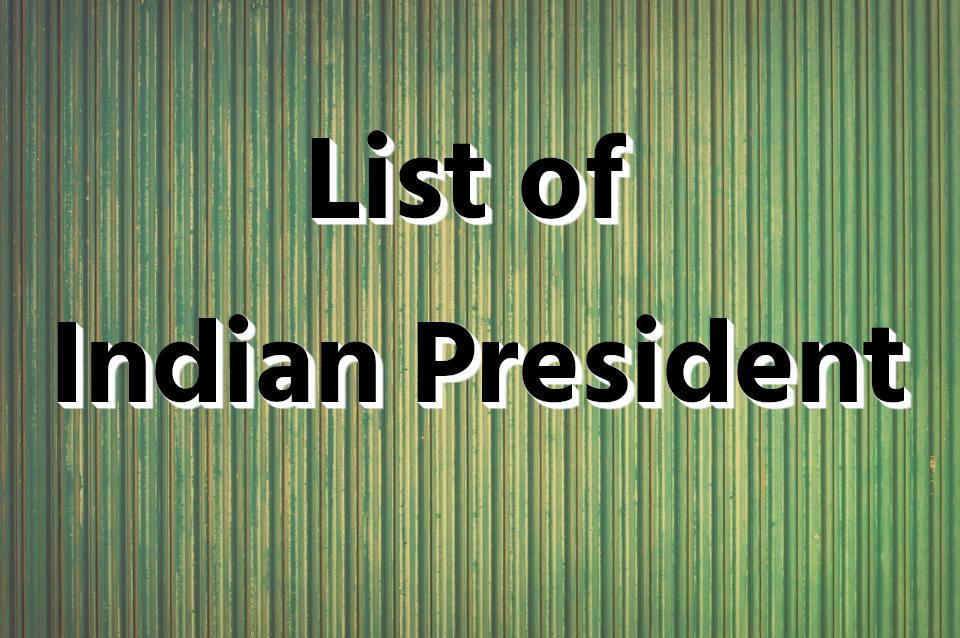
 General Knowledge2 years ago
General Knowledge2 years agoList of Indian President
-
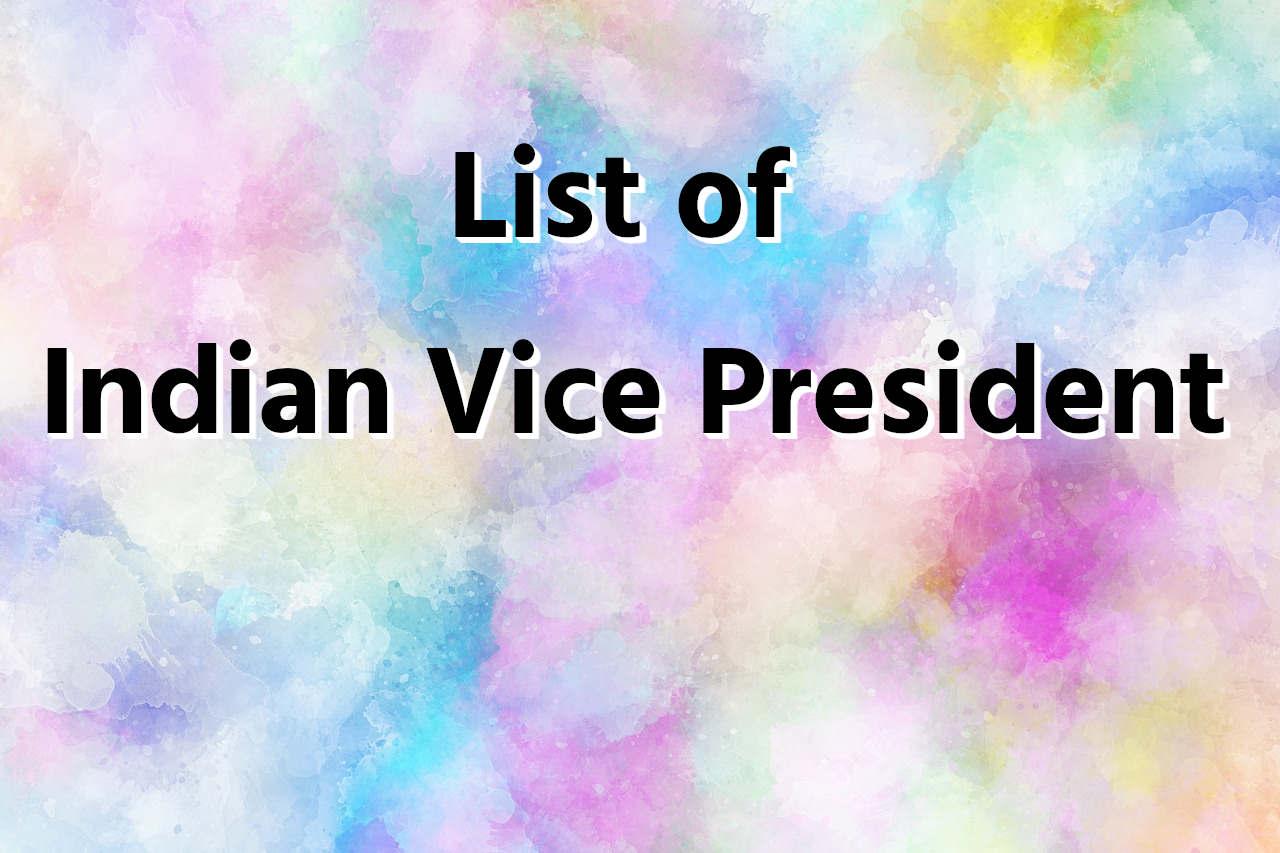
 General Knowledge2 years ago
General Knowledge2 years agoList of Indian Vice President


